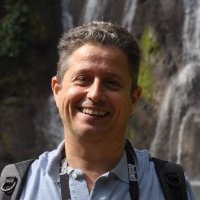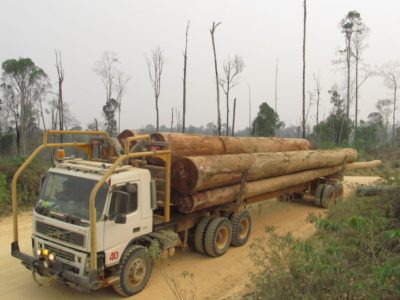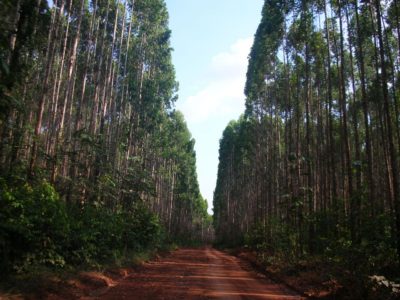
Plinio Sist is the Director of the Research Unit Forests and Societies at the French Agricultural Research for Development (CIRAD), one of the core partner institutions of the CGIAR Research Program on Forests, Trees and Agroforestry (FTA). In this interview, he talks about CIRAD’s involvement in the program, key achievements and expectations for the new phase of the research partnership starting next year. Read more blogs on partnerships here.
Why did CIRAD become involved in FTA?
CIRAD and CGIAR centers, particularly the Center for International Forestry Research (CIFOR), the World Agroforestry Centre (ICRAF) and Bioversity International, had a long collaborative history with the research unit Forests and Societies, which was formerly part of CIRAD-Forêt. This research unit had, for example, seconded between four and six researchers to CIFOR in Bogor, Lima, Yaoundé, Burkina Faso and Ethiopia. The implication of CIRAD in FTA therefore came naturally, in order to strengthen our collaboration framework within a big challenging research program.
How did the partnership develop?
In phase 1 of FTA, the research unit Forests and Societies collaborated in Flagship 2 Management and conservation of forest and tree resources, coordinated by Bioversity. Forests and Societies brought in two projects dealing with Central African forest management and future Dynamique des Forets d’Afrique Centrale (DYNAFOR) and CoForTips for the Congo Basin.
Later, we participated in the Sentinel Landscapes research, launched in mid-2012, developing the Tropical managed Forest Observatory (TmFO), which now includes 17 different institutions.

Forests and Societies also participated–with CIRAD’s research units Green and Selmet–in another pantropical Sentinel Landscapes project on the expansion of oil palm in Latin America, Africa and Asia.
Overall CIRAD researchers of five different units collaborated in all the five Flagships of FTA from 2011-2016. Because of its engagement, CIRAD became a member of the FTA management group and sits in the steering committee, and is involved in strategic decision making.
What was most valuable for you in working within FTA?
FTA showed to be an outstanding opportunity to work in groups of scientists from different disciplines and cultures, dealing with different research topics, but with common main objectives like poverty alleviation through sustainable management of forests and trees for the benefit of local populations and the society in general.
Could you give an example of a particularly good collaboration?
In 2012, we initiated the Tropical managed Forest Observatory. This network of 17 different forest research institutions and universities aims to assess the resilience of logged tropical forests in the context of climate change and high pressure of human activities towards the conversion of tropical forests to agricultural lands.
Although it is obvious that efforts are needed to preserve undisturbed primary forests by creating conservation units, these units alone will not be able to ensure the conservation of all species on a pan-tropical scale, due to economic and political reasons.

It is estimated today that only a quarter of tropical forests are pristine. Therefore, it has to be accepted that the conservation of biodiversity and of the forest ecosystems of tomorrow will mostly take place within logged, domesticated forests, but only if they are well managed.
Currently, about 400 million hectares of tropical rainforests worldwide are designated as production forests, about a quarter of which is managed by rural communities and indigenous people.
However, there remains an important gap in the current knowledge: Are product harvesting and related ecosystem services in these tropical production forests sustainable in the long term?
Indeed, it is essential to assess forest regeneration capacities on a regional scale following logging, in terms of wood volume, biodiversity and carbon, and to make silvicultural recommendations that are adapted to the different types of forests encountered in a given region.
The TmFO aims to assess the impact of logging on forest dynamics, carbon storage and tree species composition at regional level in the Amazon basin, Congo basin and South East Asia. TmFO is unique as it is the only international network looking at logged tropical forests.
Another good example is the collaboration for a Forests special issue on global research questions such as forest landscape governance.
What do you expect from the next phase ?
The first phase of FTA was an exciting period. We worked with hundreds of colleagues in a new framework of cooperation that brought together different centers and addressed new global challenges.
The second phase must be considered as an opportunity to develop big projects with challenging objectives. One of them may be forest degradation, which is just as dramatic as deforestation in some regions like the Amazon and South East Asia.
Many landscapes in the tropics are now covered by forests that have been disturbed at different gradients by illegal and predatory logging, planned logging, and fire among others. In many of these regions, people are willing to stop deforestation and develop programs to restore forests.
But there are some challenging questions to ask that I hope FTA will help us to answer: How will these degraded forests be considered in such programs? What will be their role in providing both goods and environmental services and their contribution to restoration programs?
To make progress in finding the answers, we need to work together more closely and with more interactions between the clusters of activities within a research theme, but also with more interactions between the five Flagships themselves.
Robert Nasi: Partnerships make forests, trees and agroforestry program work
Long-term relationships and mutual trust—partnerships and research on climate change
The best science is nothing without local voices: Partnerships and landscapes
Influence flows both ways: Partnerships are key to research on Livelihood systems











